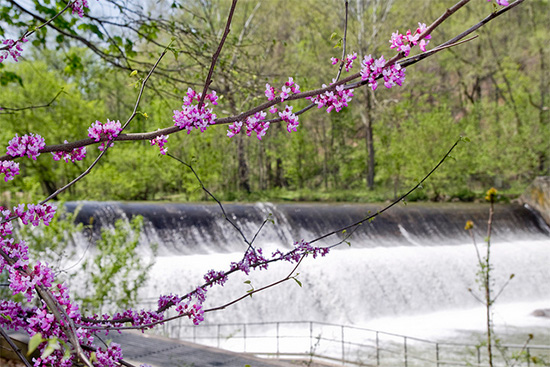Patapsco River dam removal will restore miles of fish passage
A free-flowing river would open up valuable habitat to migrating herring, alewife and American shad.
More than 40 miles of the Patapsco River will be opened to the annual migrations of herring, alewife and American shad once the waterway’s lowermost dam is removed.

Bloede Dam has blocked the passage of migratory fish for close to a century. It has also posed a public safety hazard, creating strong currents that have killed a number of swimmers. Its removal is the next step in the Patapsco River Restoration Project, and will be funded by a $3.57 million grant from the National Oceanic and Atmospheric Administration (NOAA)’s Restoration Center to American Rivers.
American Rivers has worked on the Patapsco project for the past five years with NOAA, the Maryland Department of Natural Resources (DNR) and the Friends of the Patapsco Valley State Park. The river’s Union and Simkins dams were removed in 2010 and 2011 in order to create better habitat for fish and a safer swimming hole for people.
“Removing one dam can make a major difference in the health of a river and its fisheries. But removing multiple dams… is really a game-changer,” said Serena McClain, director of river restoration at American Rivers, in a media release.
The Chesapeake Bay Program tracks the opening of fish passage as an indicator of Chesapeake Bay health, and has achieved 91 percent of its goal to open more than 2,800 miles of fish passage by 2014. Because dams, culverts and other barriers can disrupt the natural flow of rivers, their removal can mean a boost in habitat, a drop in pollution and improved protection from flooding.
Learn more about the removal of Bloede Dam.

Comments
Nice dam, but glad we have opened it for the fish. Now we need to do something about Daniel's Dam, so the who river is open.
Thank you!
Your comment has been received. Before it can be published, the comment will be reviewed by our team to ensure it adheres with our rules of engagement.
Back to recent stories